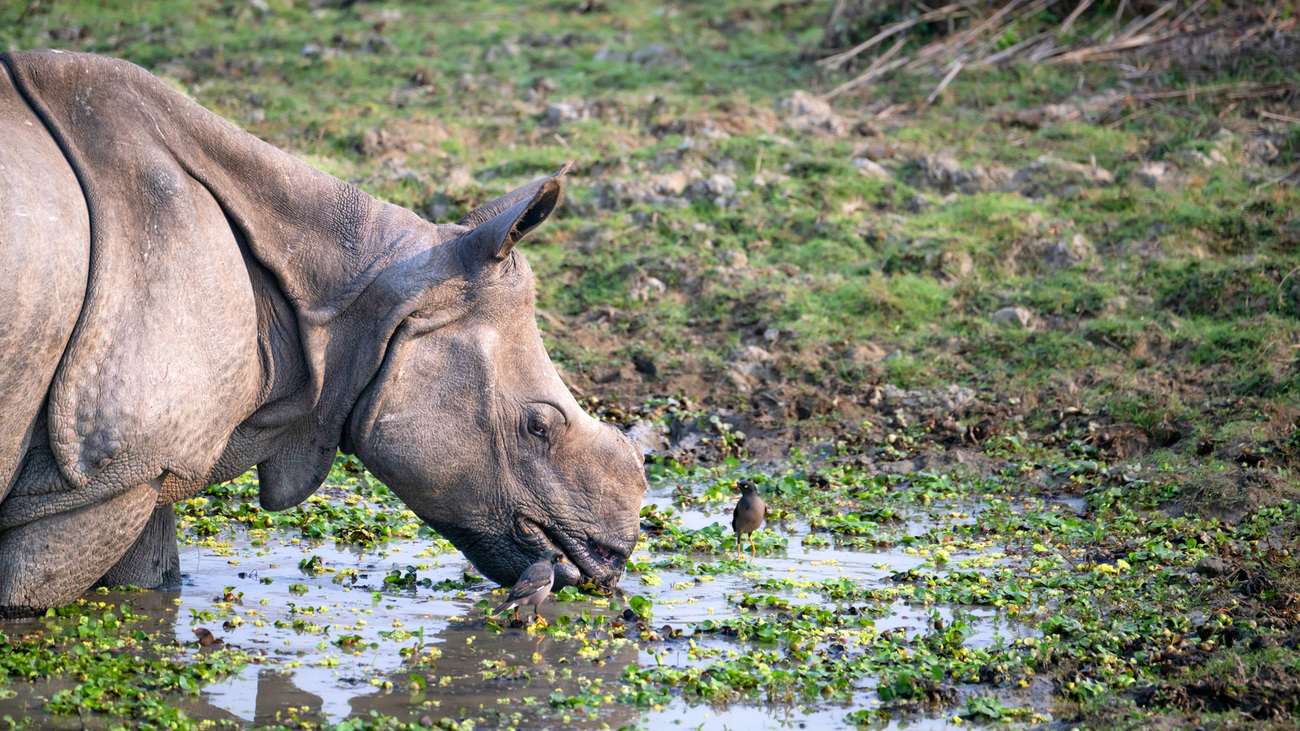Centre for Bear Rehabilitation and Conservation - India
A cub that loses its mother shouldn’t have to lose its homeRehabilitating rhinos and elephants orphaned by India’s annual floods
Rehabilitating rhinos and elephants orphaned by India’s annual floods

Written by George Turner, wildlife photographer for IFAW.
Every year in India, seasonal flooding leads to an influx of young animals separated from their mothers into the only facility in the country that specialises in rescuing, hand-raising, and rehabilitating orphaned wildlife like greater one-horned rhinos and Asian elephants—the IFAW-Wildlife Trust of India (WTI) Centre for Wildlife Rehabilitation and Conservation (CWRC).
During monsoon season, the Brahmaputra River in Kaziranga National Park—located in India’s northeastern Assam state, home to populations of the greater one-horned rhino and Asian elephant—experiences significant flooding. Flood plains extend for miles on both sides of the river, so once it begins to flood, the park fills with water almost instantaneously. This forces many animals to move to higher ground, including into nearby villages.
The people of these villages are equally impacted by the floods, facing damaged homes, infrastructure, and agriculture. This damage, combined with increased risk of human-wildlife conflict, poses great dangers to both people and animals.
Helping wildlife and communities around Kaziranga National Park
IFAW, in collaboration with WTI and the Assam Forest Department (AFD), works proactively in the area to alleviate and avoid human-wildlife conflict. Together, IFAW, WTI, and AFD created the CWRC, which rescues, rehabilitates, and releases animals impacted by flooding.
CWRC has embedded itself within the communities living along Kaziranga’s borders, fostering close relationships and instilling trust. When wild animals come into close contact with these communities, CWRC’s veterinarian and keeper team are quickly notified and perform either a relocation or a rescue.
While the Centre cares for a diverse array of wildlife—from macaques to hornbills—the largest guests are greater one-horned rhinos and Asian elephants. Monsoons frequently separate rhino and elephant calves from their mothers. In these instances, the CWRC team attempts to reunite the family, but when this isn’t possible, calves are brought to the Centre.
Once at CWRC, the centre’s veterinarian team assesses the condition of calves and starts working on a rehabilitation plan, with the ultimate goal of releasing them back to the wild.
My partner and I witnessed first-hand the dedication of the CWRC team this past February. The team that cares for the calves is nothing short of incredible. The keepers lead daily enrichment activities to stimulate the calves, simulating behaviours they’ll need in the wild. Animal nutritionists create special milks for their twice daily feeding sessions. The vets frequently check up on both physical and mental health, ensuring growth and development is moving in the right direction. This is a 24/7 operation, and CWRC is the first (and only) centre of its kind in India. There’s an ever-revolving door of rhinos and elephants coming into the Centre, all of which receive dedicated and selfless care.
Moving rhinos and elephants to solve human-wildlife conflict
After 2-3 years for greater one-horned rhinos and 2.5 years for Asian elephants, the CWRC team relocates them to Manas National Park, 150 miles away, and releases them back to the wild.
Why Manas? Kaziranga has a thriving greater one-horned rhino and Asian elephant population, but Manas’s native rhino population was wiped out during the 1980s and 90s. IFAW and WTI worked closely with the Bodoland Territorial Council to reintroduce rhinos to the land where they once roamed. Sixteen years after the first reintroduction, there are now 54 greater one-horned rhinos thriving in Manas National Park, over half of which are thriving thanks to the hard work of the CWRC team. In fact, the first rhino they reintroduced, Ganga, is now a grandmother.
IFAW and WTI continue to work with the local government and the Bodoland Territorial Council to involve local communities in the conservation of Manas and the rhinos. From leading the training of forest rangers to providing new incomes, we witnessed first-hand the positive impact of the reintroductions.
Despite the challenges posed by monsoons, human-wildlife conflict, habitat loss, and climate change, the future looks bright for Assam’s rhino and elephant populations. The important work of IFAW and WTI shows how we can solve these problems and mitigate their effects in order to establish a harmonious human-animal coexistence.
Related content
every problem has a solution, every solution needs support.
The problems we face are urgent, complicated, and resistant to change. Real solutions demand creativity, hard work, and involvement from people like you.